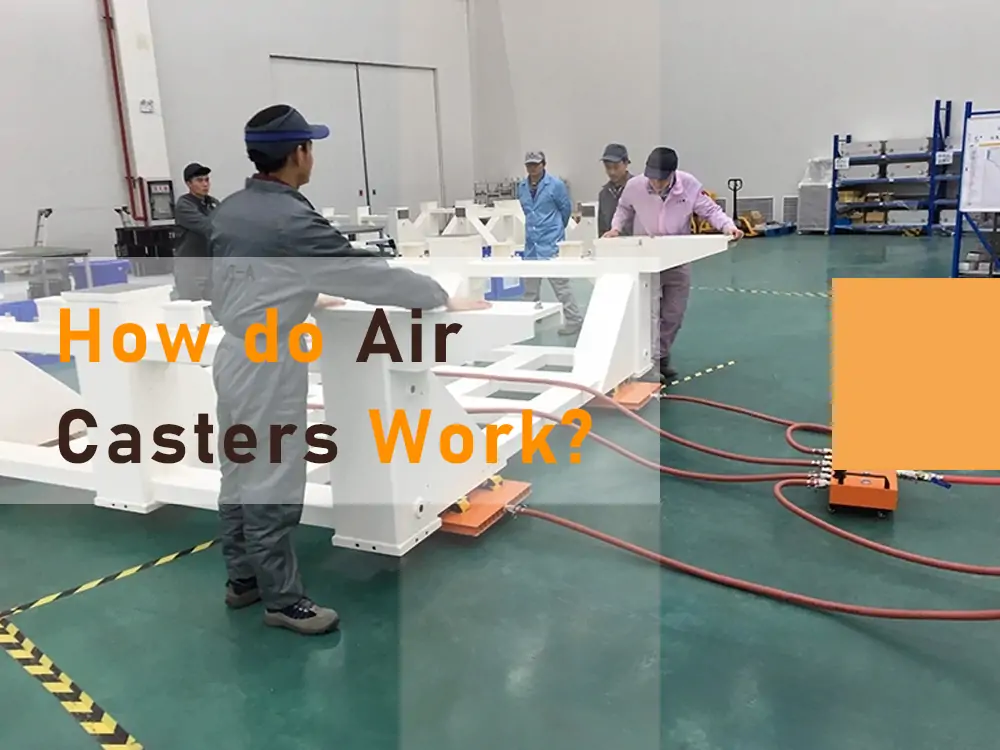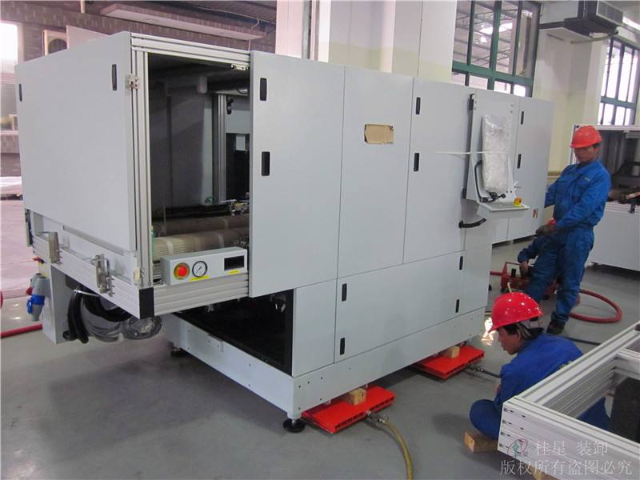
Introduction
Air casters or bearings are the most effective way to move heavy loads. They are employed by most industries, including construction, logistics, warehouses, and factories, to cut costs, reduce friction, and even save floors.
Increased awareness of air caster systems will ensure that industries work optimally. The following guide will enable you to understand the science behind air casters, functions, benefits, and requirements.
How Air Casters Work
Air casters are made from a rubber or plastic torus (a bladder). A metal backplate supports the system and allows for an air channel.
Learn how air casters work by following the steps below.
- When the air caster is free, it divides weight equally among body parts and thrusts on the ground.
- The device pressurizes air into a rubber bladder laid under this system’s metallic plate.
- While the bladder gets expanded, this system lifts loads off the ground.
- This generates a thin air film layer on the bladder floor. This film is almost as light as human hair and is an air cushion.
- This air cushion reduces the friction coefficient to near zero, 0.001 to 0.005. The machine would float on top of the floor, which enables a load to travel speedily and freely.
- They are much more flexible than ordinary wheels as they may be oriented in any direction.
The best thing is that the load can be pushed with the least force. For instance, a human can use air casters to move 5,000 pounds with as little as five to twenty-five pounds of force.

Advantages of Using Air Casters
Air casters are applied in manufacturing, aerospace, and logistics. They enable companies to transfer materials quickly and efficiently. Air casters have advantages over standard methods of using wheels. Here are some of them:
- Budget-Friendly
They are cost-effective in the long term, while the wheel casters are expensive to run and maintain.
- Floor Protection
The machines are lightweight and distribute the weight evenly on the floor. They will not damage or scratch the floor.
- Flexibility
The systems can carry loads of different shapes and sizes, from small machines to large structures.
- High Capacity
The casters can carry loads of up to 2300 pounds. To move heavy items, you can add more casters.
- Safe
They are safe to use and significantly reduce the risk of injury. One person can handle heavy loads without physical harm.
- Accurate Positioning
They allow for precise placement of heavy loads to reduce damage.
- Vibration-Free
Sensitive equipment needs extensive protection. These are more stable when they’re moved with them.
- Omni-Directional Movement
The equipment can be moved in all directions without changing positions, making it useful in more complex and tight places.
- Easy Movement
The machine can carry more substantial loads with less effort, minimizing the chances of workers’ injuries.
- Energy Efficiency
The air caster system uses less energy since the air is the driving force.
Requirements of Air Caster Systems
To utilize the air casters efficiently, you need to install them properly. Two essential requirements are air and floor conditions.
Air
A constant supply of 3 SCFM per foot is necessary to create an air cushion. You must, therefore, know the following criteria.
- Air supply systems must exert constant pressure to move the load without friction.
- The size and weight of the casters, the floor area, and the weight of the load or equipment primarily determine the air required.
- They must be serviced on clean, dry, compressed air. Most operate within the range of 87-102 psi.
- A low-pressure blower or a standard air system will drive them.
- Air flow should be established on floor conditions and air bearing specifications. The table below provides detailed SCFM requirements for each case.
| No. of Air Bearings | Air Bearing Diameter | Smooth Floor (SCFM) | Regular Floor (SCFM) | Textured Floor (SCFM) |
| 4 | 12 inches | 11 | 24 | 54 |
| 4 | 17 inches | 16 | 34 | 80 |
Floor
Air casters rely on a good floor to maintain smooth running performance.
- The air bearing requires smooth, flat, airtight, and level floors. Inaccurate floor surfaces cause holes and thus contribute to leakage problems.
- The floor should be cleaned often so that dust and other debris or obstacles do not interfere with air bearings.
- High performance can be achieved through a leveled, non-porous surface. A smooth concrete floor can be used.
- The floor surface should always be considered. This table sums up:
| Surface Type | Description | Air Bearing Suitability |
| Smooth | Polished concrete, steel, aluminum, plastic sheets, rubber/vinyl tiles | Optimal |
| Normal | Slightly textured concrete | Acceptable |
| Textured | Minor pits, hairline cracks, flaky steel plates | Less efficient |
| Rough | Broom-finished concrete, highway asphalt | Not suitable |
Conclusion
The range of advantages of air casters is endless, and they have effectively taken over various industries to transport mass items. They provide smooth working, safeguard the floor, and are cost-effective.
However, certain conditions must first be fulfilled for their application. Thus, if the system does not meet air requirements, it will experience more friction, wear, and failure.
There are some options for using floor materials. For instance, where there are, ideally, pores or cracks, layers of metal or plastic sheets or coatings can seal those gaps or cracks.
